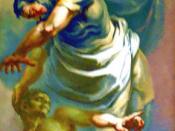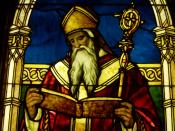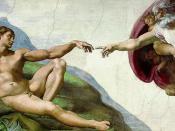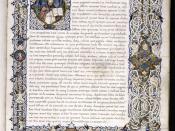AugustineÃÂs concept of the City of God and the growth of monasticism helped and reinforced each other because one succeeded where the other did not. They covered each otherÃÂs weaknesses.
During his life, Augustine wrote a book entitled The City of God. In it, he presents human history as being a conflict between what Augustine calls the City of Man and the City of God , a conflict that is destined to end in victory of the latter. The City of God is marked by people who forgo earthly pleasure and dedicate themselves to the promotion of Christian values, and the City of Man, on the other hand, consists of people who have strayed from the City of God.1 Monasticism was a lifestyle where people moved away from the city to spend their time in prayer and in contemplation of God.
The monastic way of life meant living in solitude.
The hermits had no outside contact with anyone in the metropolitan district. Occasionally, hermits lived near each other to exchange food, but they rarely spoke to each other outside of their trading. Hermits sat in their huts, or caves, and contemplated God. On the contrary, AugustineÃÂs concept of the City of God is a man who committed himself to the encouragement of Christian ideals. Man preached to the world about what Christianity was and persuaded many to convert.
AugustineÃÂs concept of the City of God and monasticism relinquished earthly pleasures, but most importantly, the two balanced each other out. It is almost as if monasticism provided answers for those with questions concerning the Christian faith, and those who lived by AugustineÃÂs City of God allowed those answers to be widely known. Without one, the other would not have been able to be as successful.
1: O'Donnell, James. "Augustine, City of God". University of Pennsylvania.





